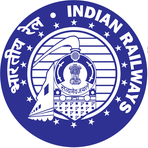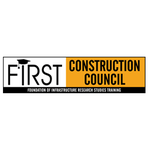The Dawn of Green Transport: India’s Hydrogen Train and Urban Mobility Revolution
September 4, 2024, 9:51 am

Location: United States, California, San Francisco
Employees: 201-500
Founded date: 2018
Total raised: $500M
India is on the brink of a transportation revolution. The recent advancements in hydrogen train technology and the rise of electric air taxis signal a shift towards greener, more efficient travel. The Research Designs & Standards Organisation (RDSO) has completed critical tests for India’s first hydrogen train, marking a significant milestone in the nation’s rail transport evolution. This initiative aligns with India's commitment to reduce carbon emissions and embrace sustainable energy sources.
The hydrogen train, designed for the Jind-Sonipat route, is not just a technological marvel; it represents a broader vision for a cleaner future. The RDSO's successful performance tests of the fuel cell and battery systems indicate that the train can meet operational demands while significantly cutting down on pollution. This is a leap forward in a country where air quality often suffers due to traditional diesel engines.
The Indian Railways plans to deploy 35 hydrogen trains under the "Hydrogen for Heritage" initiative. Each train, costing around Rs 80 crore, will require substantial ground infrastructure investment. The pilot project to retrofit existing Diesel Electric Multiple Unit (DEMU) rakes with hydrogen fuel cells is another step in this green journey. While initial costs may be steep, the long-term benefits are clear. As more hydrogen trains hit the tracks, operational costs are expected to decline, paving the way for a sustainable transport network.
In parallel, urban air mobility is taking flight. Archer Aviation, a California-based company, is set to launch electric air taxis in India by 2026. These electric vertical takeoff and landing (EVTOL) aircraft promise to transform urban travel. They are quieter, cleaner, and more efficient than traditional helicopters. India is poised to become a global leader in this emerging market, with the potential to reshape how people navigate crowded cities.
The integration of these air taxis into existing transport systems could alleviate congestion and reduce travel times. Imagine soaring above the traffic, gliding effortlessly from one point to another. This vision is not far off. As cities grow, the need for innovative solutions becomes critical. Air taxis could provide a lifeline, connecting commuters with minimal environmental impact.
Meanwhile, ground infrastructure is also evolving. The Anand Vihar Rapid Rail Transit System (RRTS) is nearing completion, promising seamless connectivity for millions of commuters. This project will integrate various modes of transport, making transitions smoother and more efficient. The RRTS station at Anand Vihar will be a hub, linking the Delhi Metro, Indian Railways, and bus networks.
The design of the Anand Vihar station is a testament to modern engineering. It features separate entry and exit routes, minimizing congestion and enhancing passenger flow. This strategic planning addresses the common frustrations commuters face when switching transport modes. The station's underground design will facilitate easy movement, making it a model for future transit hubs.
In Gurugram, Unitech has resumed construction on the South Park project, bringing hope to homebuyers who have waited nearly a decade. This project, once stalled, is now set to deliver 832 flats, addressing the pressing need for housing in the region. The resumption of construction reflects a broader trend in real estate, where stalled projects are finally moving forward, providing relief to buyers and boosting the economy.
As these projects unfold, they paint a picture of a future where transportation is efficient, sustainable, and integrated. The convergence of hydrogen trains, electric air taxis, and modern transit hubs represents a paradigm shift in how we think about mobility. This is not just about getting from point A to point B; it’s about reimagining the journey itself.
The RAHSTA Forum, held recently, brought together industry leaders to discuss these transformative changes. The forum set the stage for the upcoming RAHSTA Expo, which will showcase innovations in road and highway infrastructure. This event is crucial for fostering collaboration and sharing ideas that can propel India’s infrastructure into the future.
In conclusion, India stands at a crossroads. The advancements in hydrogen technology and urban air mobility are not just innovations; they are essential steps towards a sustainable future. As the nation embraces these changes, it will not only enhance the quality of life for its citizens but also contribute to global efforts in combating climate change. The journey has begun, and the destination is a cleaner, greener tomorrow.
The hydrogen train, designed for the Jind-Sonipat route, is not just a technological marvel; it represents a broader vision for a cleaner future. The RDSO's successful performance tests of the fuel cell and battery systems indicate that the train can meet operational demands while significantly cutting down on pollution. This is a leap forward in a country where air quality often suffers due to traditional diesel engines.
The Indian Railways plans to deploy 35 hydrogen trains under the "Hydrogen for Heritage" initiative. Each train, costing around Rs 80 crore, will require substantial ground infrastructure investment. The pilot project to retrofit existing Diesel Electric Multiple Unit (DEMU) rakes with hydrogen fuel cells is another step in this green journey. While initial costs may be steep, the long-term benefits are clear. As more hydrogen trains hit the tracks, operational costs are expected to decline, paving the way for a sustainable transport network.
In parallel, urban air mobility is taking flight. Archer Aviation, a California-based company, is set to launch electric air taxis in India by 2026. These electric vertical takeoff and landing (EVTOL) aircraft promise to transform urban travel. They are quieter, cleaner, and more efficient than traditional helicopters. India is poised to become a global leader in this emerging market, with the potential to reshape how people navigate crowded cities.
The integration of these air taxis into existing transport systems could alleviate congestion and reduce travel times. Imagine soaring above the traffic, gliding effortlessly from one point to another. This vision is not far off. As cities grow, the need for innovative solutions becomes critical. Air taxis could provide a lifeline, connecting commuters with minimal environmental impact.
Meanwhile, ground infrastructure is also evolving. The Anand Vihar Rapid Rail Transit System (RRTS) is nearing completion, promising seamless connectivity for millions of commuters. This project will integrate various modes of transport, making transitions smoother and more efficient. The RRTS station at Anand Vihar will be a hub, linking the Delhi Metro, Indian Railways, and bus networks.
The design of the Anand Vihar station is a testament to modern engineering. It features separate entry and exit routes, minimizing congestion and enhancing passenger flow. This strategic planning addresses the common frustrations commuters face when switching transport modes. The station's underground design will facilitate easy movement, making it a model for future transit hubs.
In Gurugram, Unitech has resumed construction on the South Park project, bringing hope to homebuyers who have waited nearly a decade. This project, once stalled, is now set to deliver 832 flats, addressing the pressing need for housing in the region. The resumption of construction reflects a broader trend in real estate, where stalled projects are finally moving forward, providing relief to buyers and boosting the economy.
As these projects unfold, they paint a picture of a future where transportation is efficient, sustainable, and integrated. The convergence of hydrogen trains, electric air taxis, and modern transit hubs represents a paradigm shift in how we think about mobility. This is not just about getting from point A to point B; it’s about reimagining the journey itself.
The RAHSTA Forum, held recently, brought together industry leaders to discuss these transformative changes. The forum set the stage for the upcoming RAHSTA Expo, which will showcase innovations in road and highway infrastructure. This event is crucial for fostering collaboration and sharing ideas that can propel India’s infrastructure into the future.
In conclusion, India stands at a crossroads. The advancements in hydrogen technology and urban air mobility are not just innovations; they are essential steps towards a sustainable future. As the nation embraces these changes, it will not only enhance the quality of life for its citizens but also contribute to global efforts in combating climate change. The journey has begun, and the destination is a cleaner, greener tomorrow.

